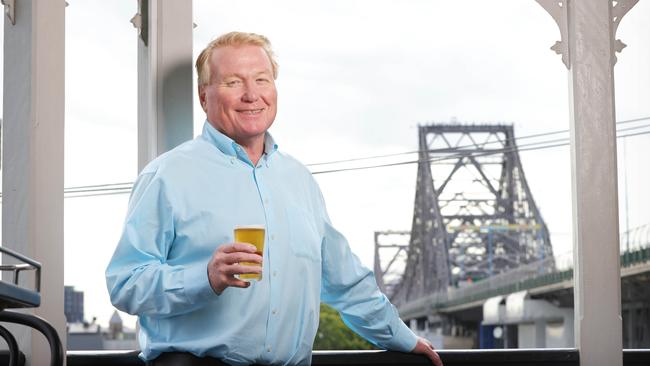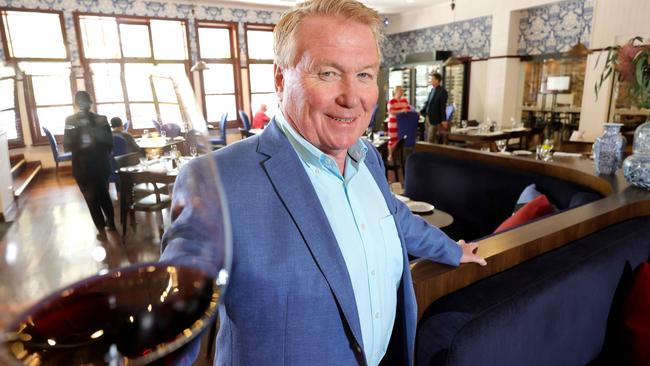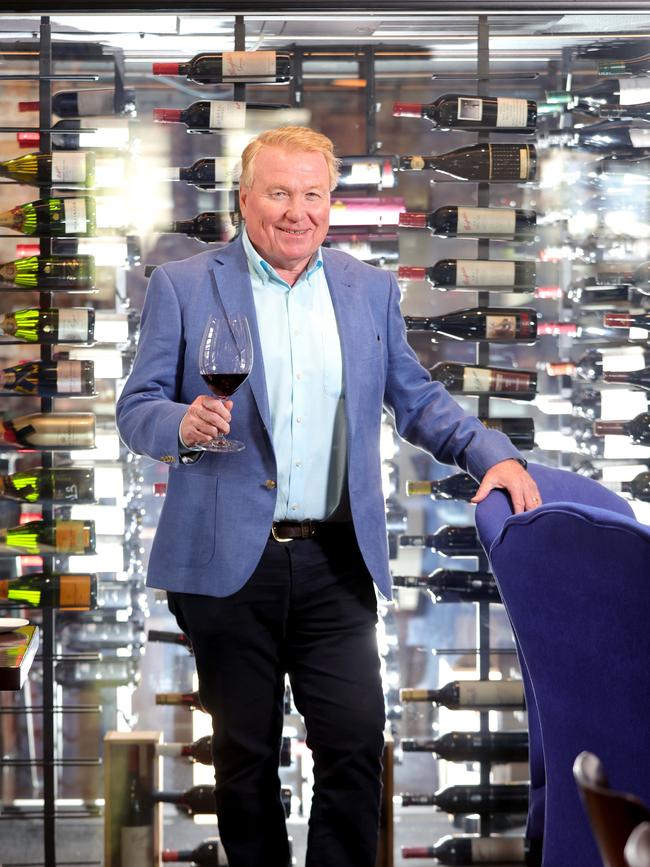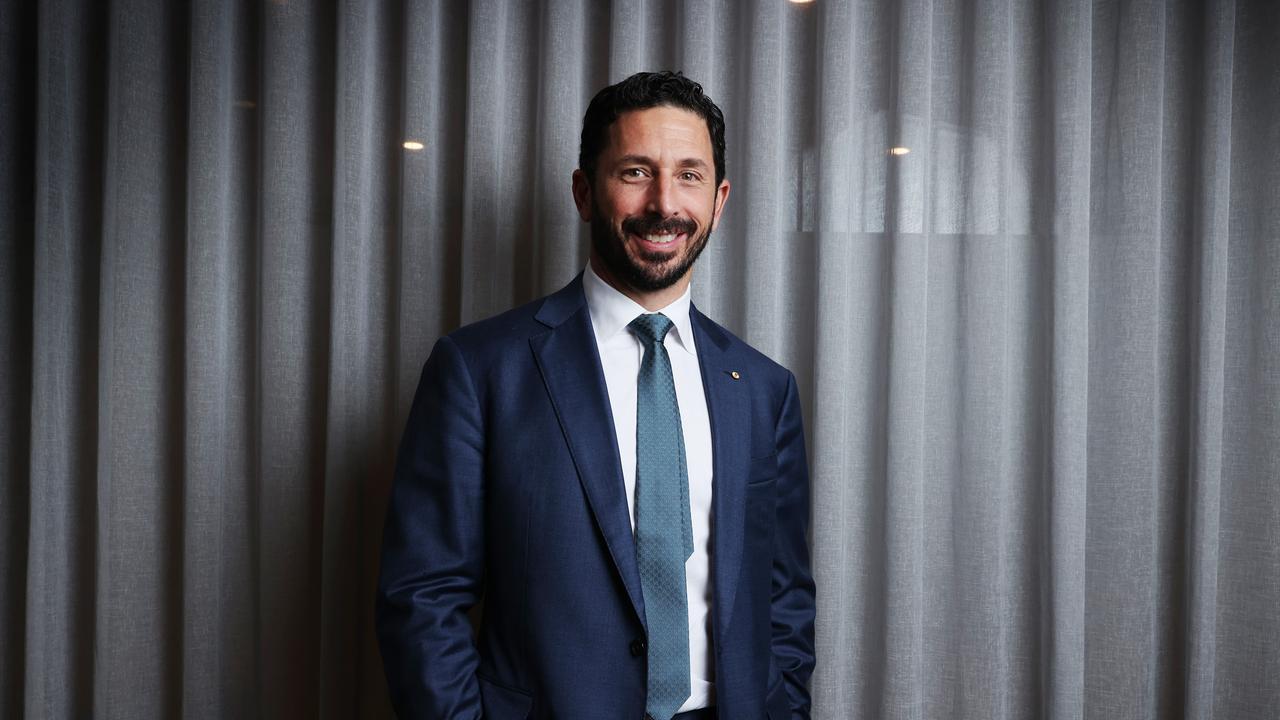The Deery family’s jewel in the crown is the Story Bridge Hotel
The family of publicans behind the iconic Story Bridge Hotel are still growing strong despite challenges in the competitive Queensland pub scene.

QBW
Don't miss out on the headlines from QBW. Followed categories will be added to My News.
From Ireland to Australia, there’s no doubt the Deery family are publican royalty.
The owners of the iconic Story Bridge Hotel have in recent years expanded their empire beyond Brisbane’s inner city to watering holes further afield.
In 2019, the Deerys bought the 115-year-old Woodford pub as well as investing in two hotels on the Sunshine Coast. Family patriarch Richard Deery, who also is president of the Queensland Hotels Association (QHA), said he’s always on the look out for further acquisitions given the bounce back of the sector following Covid-19.
“Never say never,” said Mr Deery over lunch at the eponymous Deerys Restaurant at the Story Bridge Hotel. “Woodford is a great pub. It’s an hour out of town but it could be 500 miles away. It’s totally different and regional.”
Mr Deery remembers picking up coins from the public bar of the Story Bridge Hotel as a child to ride the ferry across the Brisbane River to the city.
The Deerys purchased the Story Bridge in 1967 after generations of running pubs in Australia and overseas. They have watched the transformation of the suburb from shipyards and factories to multimillion dollar high-rise penthouses. The hotel today is managed by Mr Deery and his sister Jane Deery, who took over the running from their late father Barrie.
Built in 1886 as the Kangaroo Point Hotel, it is one of the few pubs in the world built under a bridge. Mr Deery points out the pub, then known as the Kangaroo Point Hotel, was in the path of the bridge that was constructed in the late 1930s and opened in 1940.
But because of the watering hole’s popularity among workers and others the approaches were diverted away. “Anyone who has done the bridge climb and reach the top can see the deviation, coming north and going round to the right,” said Mr Deery.
Over many decades, the pub remained the venue for reunions of bridge workers, who would reminisce about the many drinking sessions after work.

“When we moved here in 1967, we spent the first five years living upstairs. Then in 1972 we moved across the road into the house – the Brown House as we called it – which has since been removed. It was one bathroom and one toilet for six kids.”
Mr Deery said the shipbuilding and glass industries represented by names such as Evans, Deakin and Robb & Brown started disappearing from Kangaroo Point in the late 1970s.
“It wasn’t until the late 1980s and early 90s that residential housing started going in here,” he said. “Before some of the big buildings were built in town, you could see across to the GPO and City Hall. The city is only 500 meters away but the river is in between.”
Mr Deery said “UTB”, or “under the bridge”, was shorthand for what happened in the little community surrounding the pub. “People find it quite amazing that it is so quiet down here,” he said. “You have 100,000 vehicles a day back and forth overhead.”
The imminent opening of the new Kangaroo Point Green Bridge to the city would help connectivity for residents and businesses of the historic suburb.
“When we first came here, the ferry was one cent a ride and it was never a problem,” he said. “We used to be able to pick up coins off the floor in the bar. If you found enough copper coins, you’d ride back and forth and even help the ferry captain tie up. Now, it’s not the cost, it’s more the time, time’s pressure.”
Mr Deery said the Story Bridge Hotel had always been in the forefront of industry trends, including the explosion of craft beer. “When the bridge had its 50th birthday in 1990, my brother Paul, who’s since passed, came up with the idea of doing a festival of craft beer,” he said. “So we were the first pub in Queensland to showcase craft beer. And in the 90s no one knew anything about it, there was just Forex and Fosters. We had the festival down here for 12 years here.” He said despite the growth of big hotel chains, the majority of pubs – around 1,350 in Queensland – were still owned by small operators or families. He said pubs defied a ‘cookie cutter approach’ and each property had to be able to distinguish itself, whether that be music, food or other entertainment.
“Food is a strong part of us now,” said Mr Deery. “But we’ve come from a background of strong music, 6-7 days a wee. We are certainly not the venue we used to be for live music and its more about food.” Mr Deery said he had been amazed at how quickly pubs had bounced back from the pandemic.

“Without JobKeeper you couldn’t have kept doing what we did,” he said. “We kept takeaway food going, which was really good. The hardest thing now is labour. So migration was needed to fill the gaps, and getting people back in the workforce.”
With his QHA hat on, Mr Deery said the sector is lobbying federal treasurer Jim Chalmers to reintroduce tax deductibility for the pub or restaurant lunches. “That $100 that gets spent at lunch during the week turns into multiples of three times because we can employ more people and suppliers get more money. The bank manager can take the concreter out, talk about different things, whatever it is. They can do it in a fancy place or they can do it at a pub. It’s not just about where it goes, it’s just about stimulating the economy.”
A few years back, the family purchased a small cattle property near Kilcoy with the idea of supplying “paddock-to-plate” for Deerys restaurant, which is about the celebrate its 30th anniversary. “I was born on a property in Texas in NSW, but have been on a steep learning curve,” he said. “I had never driven a tractor before.”





